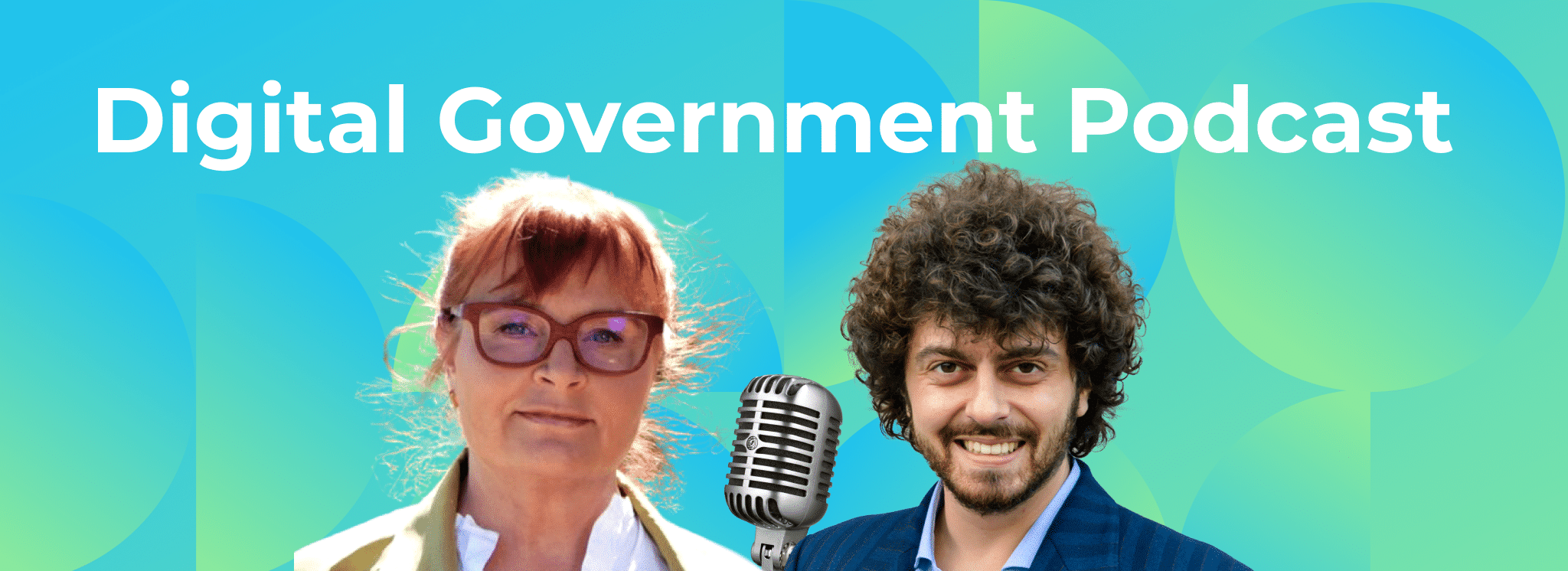
Podcast 🎧 & blog: Innovation in healthcare provision
E-governance practitioners well know that the implementation of digital tools is essential, to enhance the provision and reach of public services. This applies across domains, from the most specific in user base to the more generalist ones. But innovation gains even further relevance when services matter to the entire population at large when it comes to public goods.
Healthcare represents by full means one of these cases. And as of late, the e-Governance Academy features in its ranks an expert in this field.
Piret Hirv, Senior Expert in eGA’s Data and Services Competence Centre, joins this episode of the Digital Government Podcast to talk about her experience in the public and private sectors on the matter, and how ICTs – and understanding the needs of care – can improve healthcare provision for governments worldwide.
One overarching goal, three cornerstones
The primary goal of innovation in healthcare is to enhance access, improve quality, and increase efficiency in healthcare services. Three crucial purposes, as well as pillars. Particularly in a landscape where the demand for healthcare services rises, and resources remain limited. To this end, Hirv highlights three key principles that should drive innovation in this field: access, quality, and efficiency.
“Resources are as they are, and the demand for services is increasing. We have to innovate to improve quality and access,” Hirv states. This underscores the importance of leveraging technology to bridge the gap between available resources and growing healthcare needs. To serve as a catalyst, one that empowers us to rethink how we provide healthcare to all, ensuring no one is left behind.
The need for a robust ecosystem of stakeholders
In many ways, Estonia embodies the principles Hirv outlines. One standout example is the introduction of e-prescriptionsand electronic health records, digital solutions that gained traction internationally as well, showcasing how ICTs can transform healthcare without intrusive patient experiences.
With Hirv, however, we recall the time when Estonia’s digital healthcare journey had just begun. The year was 1996, when the country introduced its first online service, facilitating the online exchange of reimbursement invoices between family doctors and the health insurance fund. This early step laid the foundation for a series of innovative healthcare services.
But even though each of these services was designed to address specific challenges, a key factor in Estonia’s digital healthcare success lies in the tight integration of its e-Health systems with the broader e-government framework. Estonia employs a unified digital identification system that spans all e-services, including healthcare, and the data exchange platform X-Road. These tools, and a highly collaborative landscape of public, private, and research-focused stakeholders, enable the development of innovative healthcare solutions.
Involving health practitioners in care development, enhancing prevention
Right, let’s talk about stakeholders, indeed. True that, another critical element in Estonia’s healthcare success is its robust ecosystem of stakeholders. Hospitals, academia, start-ups, IT companies, governmental organizations – all are active participants in the innovation process. But Hirv does underscore the importance of involving end-users, such as doctors and nurses, in the early stages of solution development. This collaborative approach ensures that innovations meet real-world needs effectively.
She is well aware of that, not only through her past experience as Manager of the Connected Health cluster at Tallinn’s Science and Business Park Tehnopol, but also as a former nurse herself. Experience that she brings to eGA’s work on data and public services, together with a bit of sector-specific common-sense as well – that governments can’t do it all on their own.
“You need to bring stakeholders around the table to be able to innovate. And this is something that Estonia has a really good experience with. So, we can share this experience with the other countries,” said Hirv.
While governments should invest more in preventive care, Hirv also emphasizes the role of individual responsibility in collectively managing healthcare. Prevention plays a vital role in reducing public spending and improving overall health outcomes. Citizens too should take responsibility for their health, by adopting healthy lifestyles and practices.
“Governments alone can’t address all health-related issues. We need to educate ourselves, be proactive, and take care of our health,” Hirv says. A point fully in line with the idea that healthcare extends beyond (and before) treating illness, to promoting overall well-being as a public good.
















